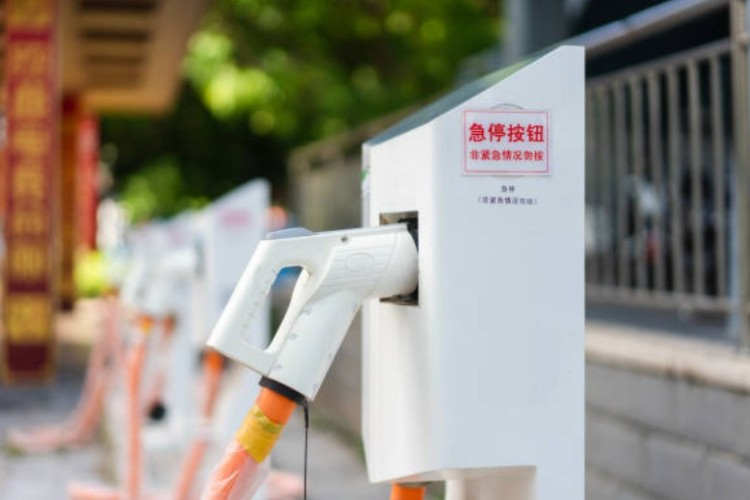
China’s EV industry: The global automotive industry is witnessing a historic shift. For the first time in over a century, gasoline-powered cars are losing ground decisively, and China stands at the forefront of this transformation. In each of the last five months, battery-powered and plug-in hybrid vehicles have made up more than half of all cars sold in the country. Chinese automakers are not merely keeping pace with this revolution—they are driving it.
Yet, behind the gleaming surface of innovation and global market penetration lies a darker reality: cut-throat competition is pushing the industry towards self-destruction. Unless China can rein in its own success, the very firms that made it the world leader in electric vehicles may collapse under the weight of “involution”—a vicious cycle of excess competition, collapsing margins, and overcapacity.
READ | India’s energy strategy: Why solar thermal deserves a second look
The rise of China’s EV industry
No country has embraced electric mobility as rapidly as China. At the peak, nearly 500 firms entered the EV business, spurred by lavish subsidies, cheap credit, and local government zeal to back “national champions.” The outcome has been extraordinary: Chinese companies like BYD, Geely, and Nio have emerged as world leaders in innovation and scale, outproducing and out-exporting rivals in Europe, the United States, and Japan.
Exports of Chinese EVs jumped 80 per cent in 2023, with surging sales to Europe, Latin America, and Southeast Asia. These vehicles are cheaper, often better equipped, and increasingly competitive on technology. For President Xi Jinping, the sector is more than a growth engine—it is central to his push for “new quality productive forces,” a strategy to secure technological leadership and geopolitical leverage.
But triumph has come at a cost. The industry is saturated with competitors, and its success is now breeding internal contradictions that threaten to unravel it.
From evolution to “involution”
The word most often used by Chinese officials to describe the malaise is “involution.” Once applied to oppressed farmers in colonial Indonesia who laboured harder for no additional reward, the term now captures industries trapped in meaningless, ruinous competition.
That trap is evident in the EV sector. Nearly 50 automakers are still battling for market share, slashing prices repeatedly to lure customers. A Rhodium Group analysis noted that while sales volumes rose by 11 per cent in the first half of this year, the value of those sales increased by less than 1 per cent. Profit margins are being crushed, suppliers go unpaid, and many firms survive only by borrowing more from state-run banks.
This pattern is not unique to EVs. China’s solar panel industry has been locked in a similar spiral for over a decade, and the battery sector now faces gluts as well. The cycle of overcapacity and collapsing prices risks dragging the broader economy into deflation, with factory-gate prices reportedly falling for 33 straight months.
Government’s half-measures
China’s leadership is fully aware of the danger. On July 30, the Politburo, chaired by Xi Jinping, declared the need to “reinforce industry self-discipline to prevent vicious ‘involution’ competition.” The State Council ordered 17 automakers to pay suppliers within 60 days, but only three—unsurprisingly state-backed firms—have complied.
Beijing’s preferred solution is forced consolidation: fewer firms, producing less, would restore balance. Industry consultants already predict that only about 15 companies will survive in the medium term. But such consolidation faces structural obstacles. Local governments, having sunk billions into their chosen champions, resist closures that would bring layoffs and wasted investment. At the same time, the central government’s instinct to preserve control by subsidising “zombie” firms undermines the logic of market discipline.
Thus, China finds itself torn between two irreconcilable imperatives: the political need to maintain stability and employment, and the economic imperative to allow weaker firms to fail.
China faces international backlash
If domestic pressures were not enough, China’s EV glut is already reshaping global trade politics. With domestic profits thin, automakers are pushing excess production abroad. The result is backlash. The European Union has imposed tariffs on Chinese EVs to protect its own auto industry, while countries like Thailand and Brazil have tightened rules to force Chinese firms to build locally rather than export cheap cars.
Even in emerging markets, where low-cost EVs were once welcomed, governments are wary of becoming dependent on Chinese imports. For Washington, Tokyo, and Seoul, the flood of subsidised Chinese vehicles is not merely an economic issue but a geopolitical one, deepening distrust of Beijing’s trade practices.
Ironically, what was once China’s most successful industrial policy is fast becoming a source of global friction.
China’s EV industry: The self-destructive path ahead
Left unchecked, the EV industry could implode under the weight of its contradictions. Endless price wars erode profits, discourage innovation, and drive firms into unsustainable borrowing. Suppliers are squeezed to breaking point, risking wider disruption in related industries such as batteries and electronics.
Even if consolidation occurs, there is no guarantee that the most efficient and innovative firms will emerge on top. Political clout, bureaucratic inertia, and the party-state’s instinct to preserve jobs may allow weaker firms to survive while stronger but less connected ones perish. The risk is not merely of individual firms failing, but of systemic inefficiency that could sap the dynamism of the entire sector.
From survival to sustainability
The solution lies in moving from survival through subsidies to sustainability through discipline. China must allow the market to perform its natural role of culling weaker firms, while setting clear and transparent rules to prevent destructive price wars. That will require a difficult political choice: tolerating layoffs, bankruptcies, and the anger of local governments in the short term in order to secure the long-term viability of the industry.
Beijing can cushion the social costs with retraining programmes, support for displaced workers, and incentives for firms to merge rather than collapse. At the same time, it must resist the temptation to flood global markets with cheap exports—a path that only invites more tariffs and heightens geopolitical tension.
If China succeeds, its EV industry could consolidate around a handful of globally competitive champions capable of leading the next phase of automotive innovation. If it fails, involution may reduce today’s success story to tomorrow’s cautionary tale.
Anil Nair is Founder and Editor, Policy Circle.

